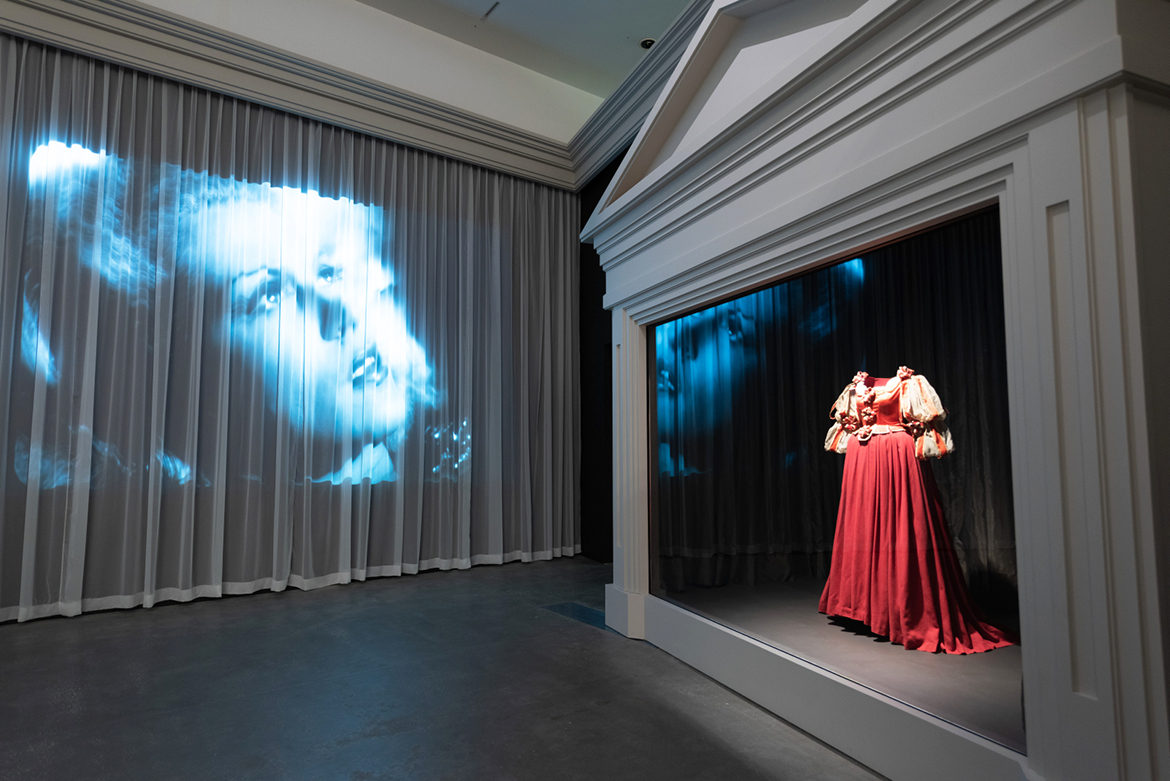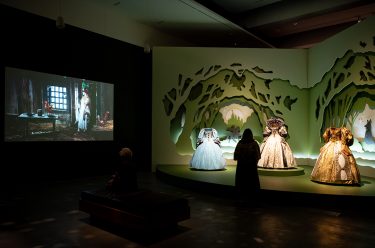Transformation is an essential element in the fairy tale tradition. A change of appearance (a frog becoming a prince) can signal or conceal a character’s true identity. Temporary illusions (a pumpkin turning into a carriage) and changes in financial or social standing (a servant becoming a princess) allow characters to experience other realms. While some characters alter their own appearance to escape or trick others, many are victims — transfigured into monsters or animals as punishment. The spells that trigger these transformations are, in many cases, broken by a character’s moral redemption, or the compassion of another who sees beyond their altered appearance.
Buy Tickets to ‘Fairy Tales’
Until 28 April 2024
Gallery of Modern Art, Brisbane
Fairy tales themselves can transform as they shift across storytelling mediums. They began as spoken narratives before being shared in print from the sixteenth century. With the invention of cinema in the 1890s, filmmakers sought new ways to bring beloved fairy tales to life. Today, they are told and retold through film and other screen-based media. Fairy tales in film can both adhere to convention for broad appeal and radically reinvent these stories’ darker aspects.
‘Fairy Tales’ unfolds across three themed chapters. ‘Into the Woods’ explores the conventions and characters of traditional fairy tales alongside their contemporary retellings. ‘Through the Looking Glass’ presents newer tales of parallel worlds that are filled with unexpected ideas and paths. ‘Ever After’ brings together classic and current tales to celebrate aspirations, challenge convention and forge new directions.
Travel with us in our weekly series through each room and theme of the ‘Fairy Tales’ exhibition at Brisbane’s Gallery of Modern Art (GOMA) as we introduce you to some of the works.
DELVE DEEPER: Journey through the ‘Fairy Tales’ exhibition with our weekly series
EXHIBITION THEME: 3 Into the Woods
Production still from ‘La Belle et la Bête (Beauty and the Beast)’ (1946)
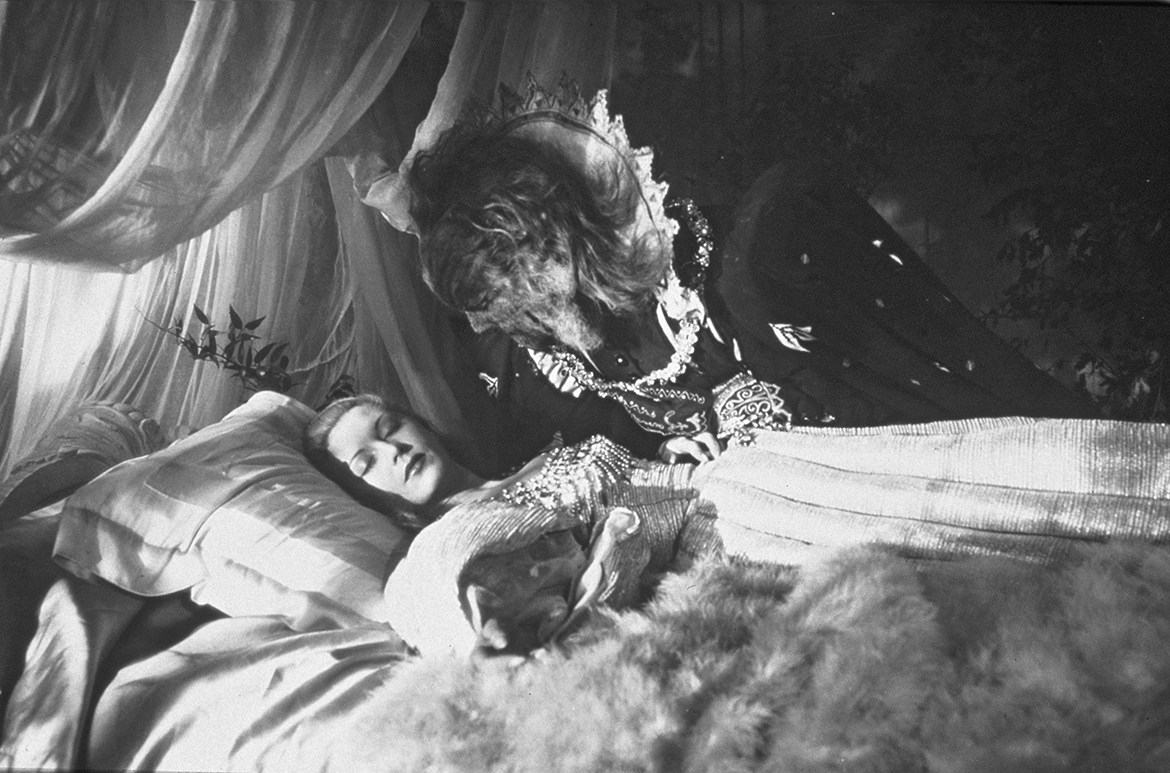
The story of ‘Beauty and the Beast’ — with its striking message that inner beauty matters most, and that the strongest love is unconditional — is an example of how classic tales are re-imagined on screen for new audiences. Like other tales from the literary salons of the French aristocracy, early versions of the story contained coded advice for young girls navigating arranged marriages to older men. More recent accounts still embrace these messages of sacrifice and survival but have been adapted to reflect the desire for self-empowerment and redemption.
Adélaïde’ costume ‘La Belle et la Bête’ (Beauty and the Beast) (1946)
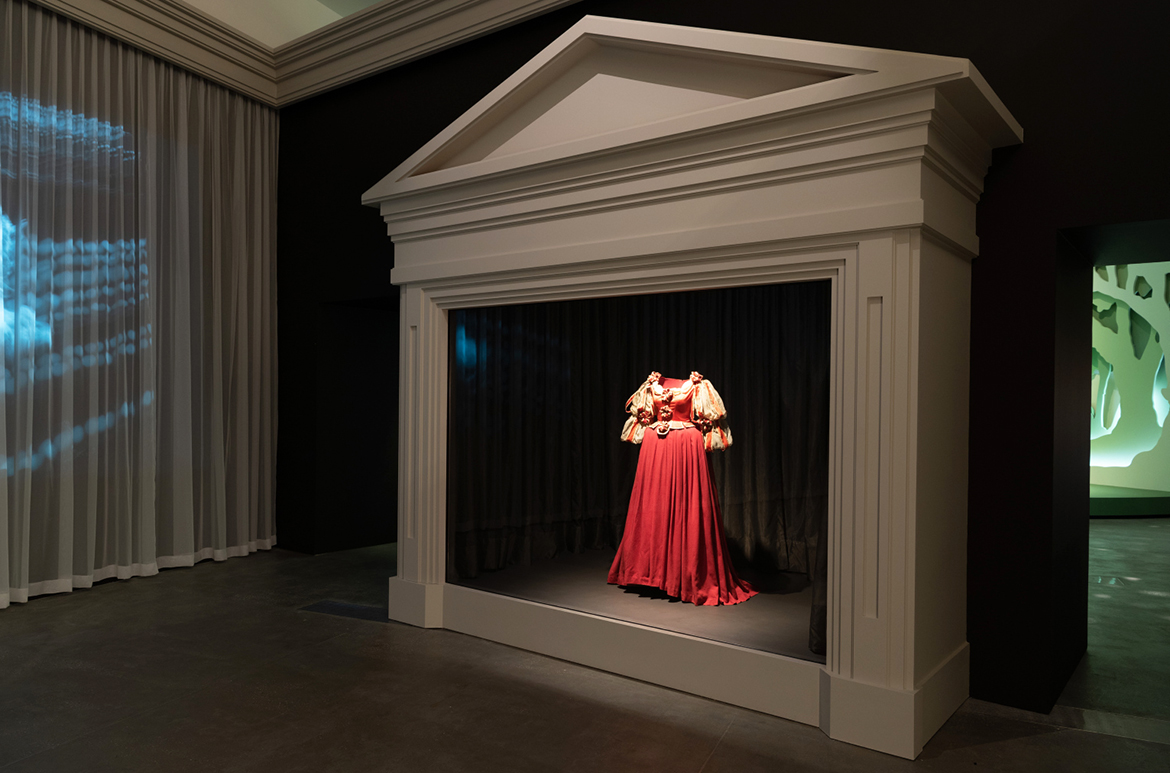
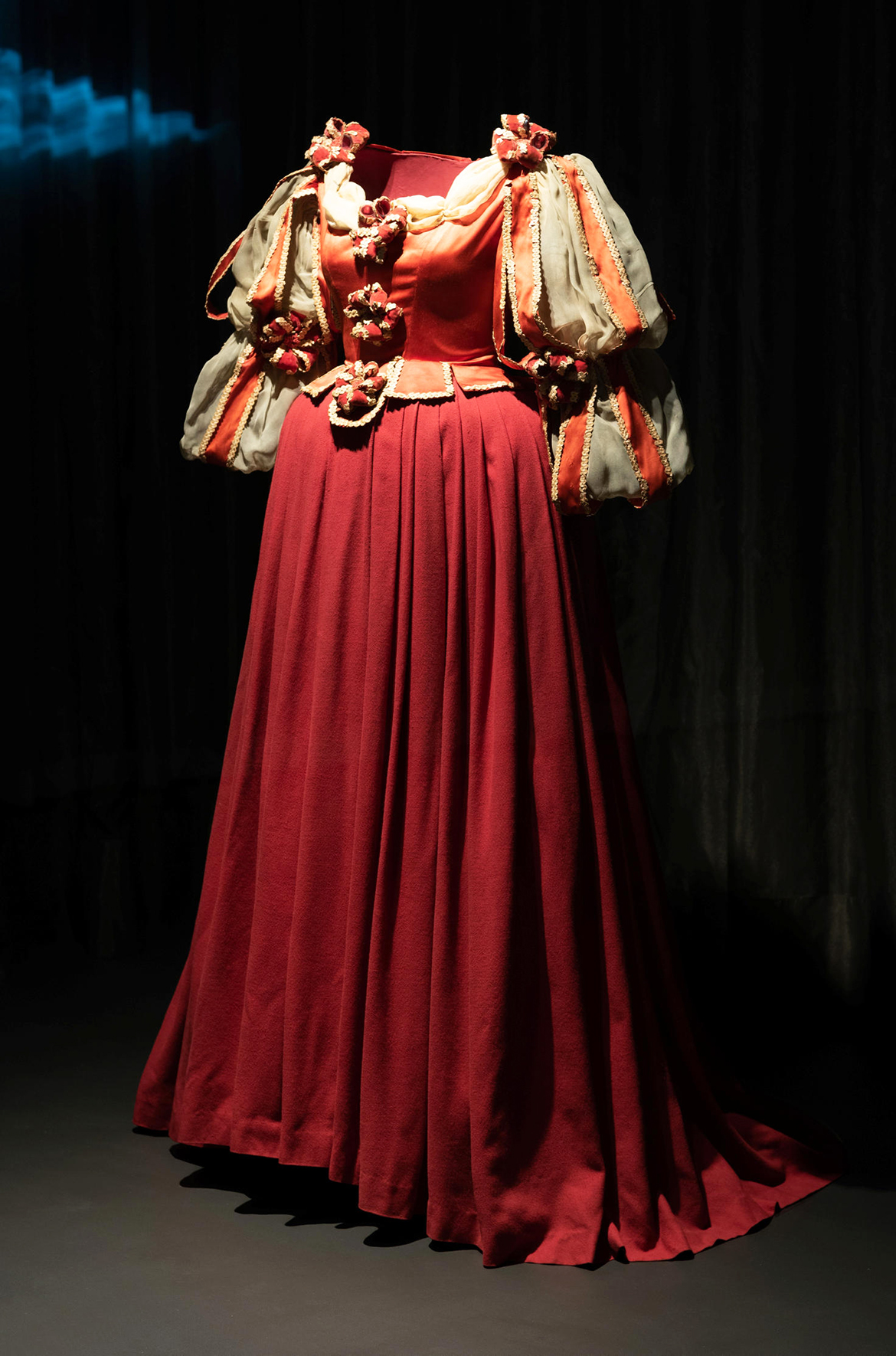
Poet, artist and filmmaker Jean Cocteau’s captivating film La Belle et la Bête (Beauty and the Beast) from 1946 reimagines for the screen the original fairy tale written by French novelist Gabrielle-Suzanne Barbot de Villeneuve in 1740, and its more famous later adaptation, written by Jeanne-Marie Leprince de Beaumont in 1756. The story tells of a daughter’s selfless love for her father. When his life is endangered after plucking a rose for her from the garden of a castle with a mysterious occupant, Beauty (also known as Belle) is compelled to save her father’s life by promising to live with the Beast residing within.
Cocteau’s dreamlike film draws imagery from Gustave Doré’s illustrations of similar tales, including Charles Perrault’s Peau d’Âne (Donkey Skin) written in 1695. With its uncanny and surrealist imagery, alongside elements of enchanted gloves, magic mirrors and sculptures that come to life, Cocteau’s film succeeds in creating an otherworldly and hypnotic fairy tale realm. The costume for ‘Adélaïde’, (one of Beauty’s (Belle’s) scheming sisters in Cocteau’s retelling), is one of the few remaining items from the 1946 film set still in existence (illustrated).
Rose in a bell jar, Mirror & Table ‘Beauty and the Beast’ (2017)
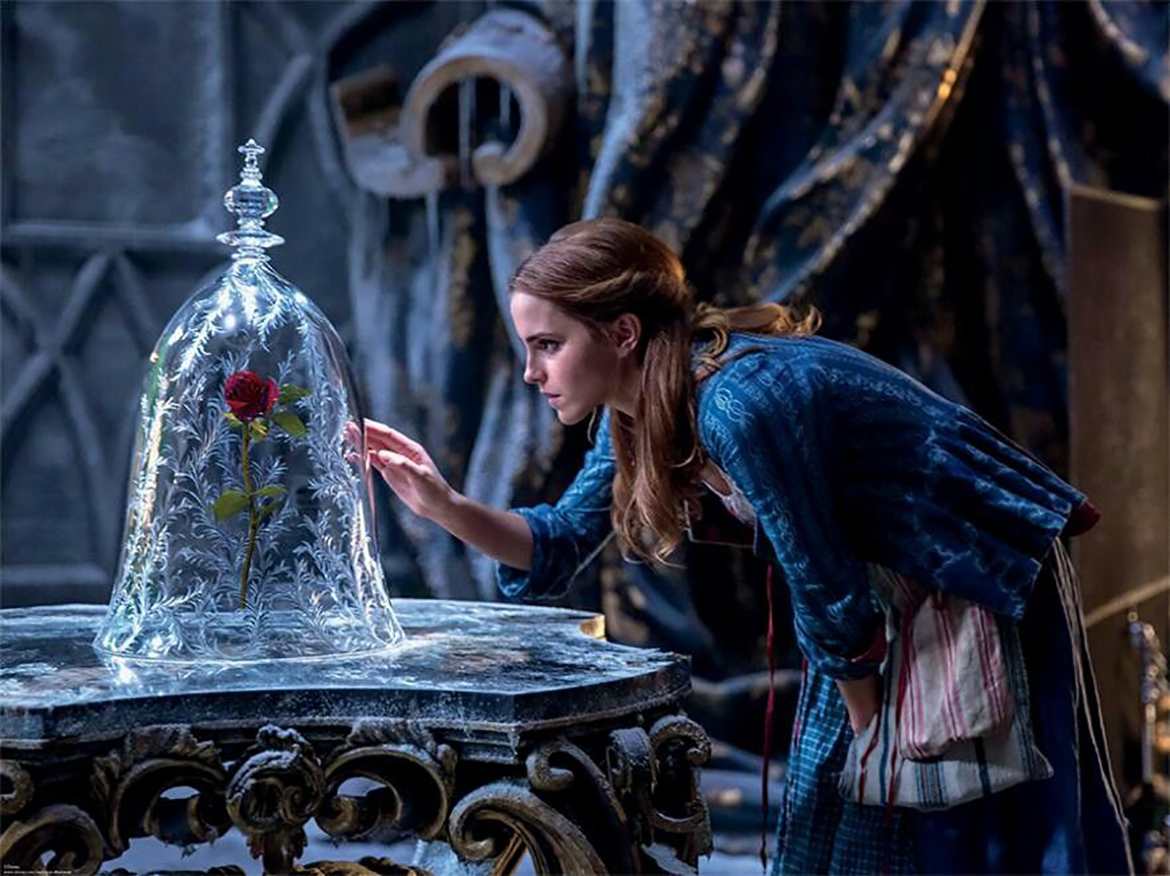
Rose in a bell jar, Mirror & Table on display in ‘Fairy Tales’
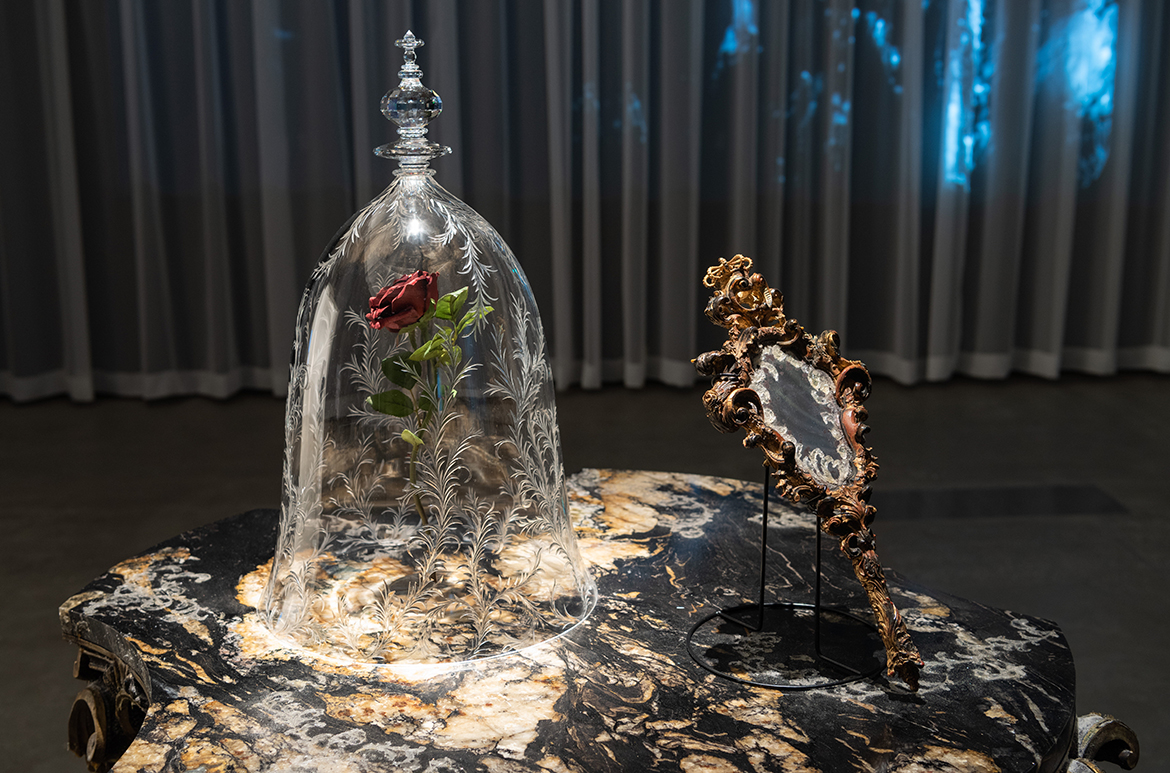
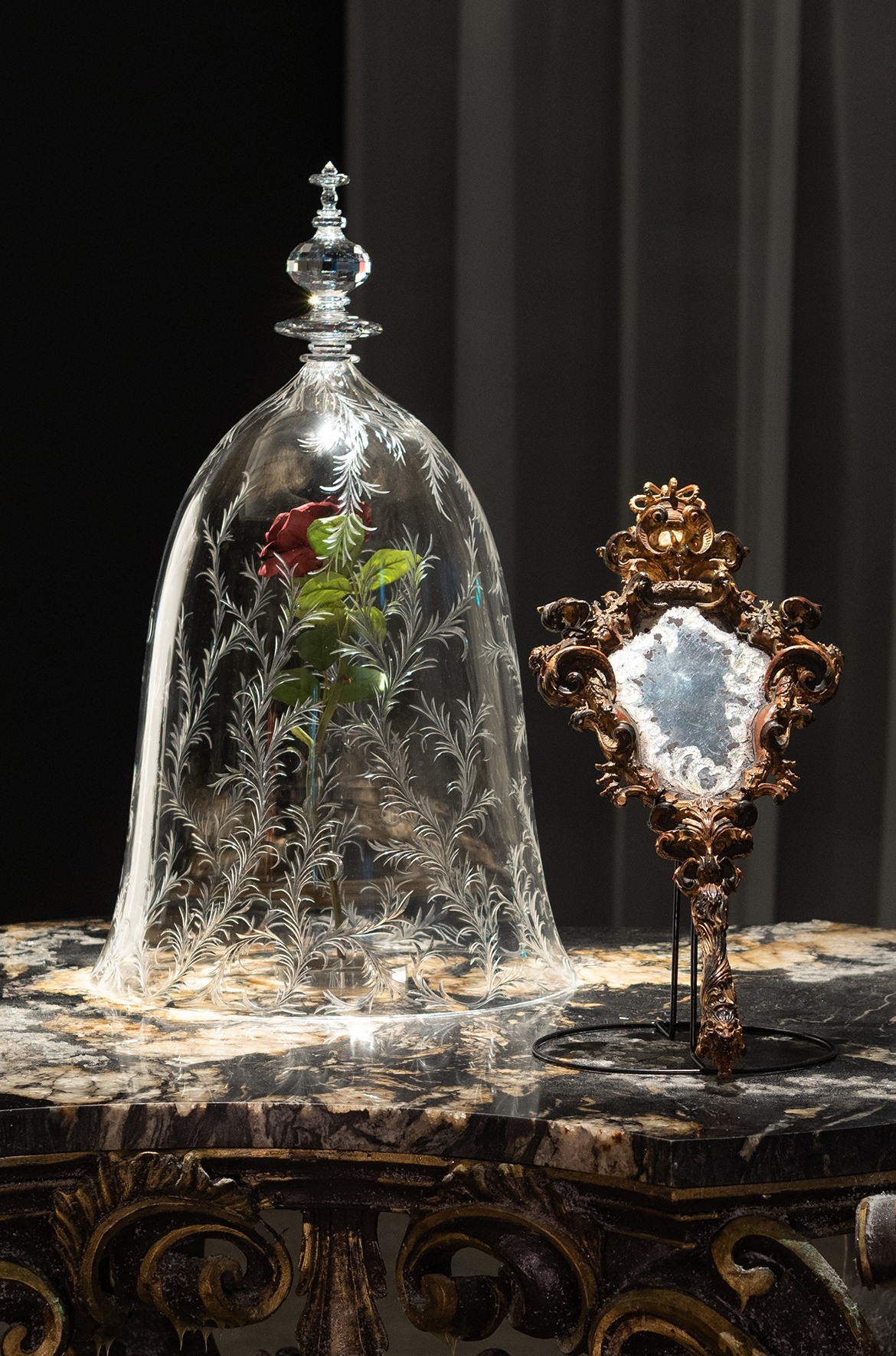
An enchanted red rose and a magic mirror (illustrated) are two key elements of the story of Beauty and the Beast. These objects were drawn from the 2017 Walt Disney Studios remake, directed by Bill Condon, and were inspired by the well-known 1991 animation. The rose beneath a bell jar and the mirror resting on a table showcase the craftsmanship involved in bringing the fantastic world of fairy tales to life on screen. The Walt Disney Studios have devoted many decades to telling fairy tales on screen; this live-action version of Beauty and the Beast foregrounds Beauty’s (Belle’s) independent nature and the Beast’s redemption.
The ‘Fairy Tales’ exhibition is at Brisbane’s Gallery of Modern Art (GOMA), Australia from 2 December 2023 until 28 April 2024.
‘Fairy Tales Cinema: Truth, Power and Enchantment‘ presented in conjunction with GOMA’s blockbuster summer exhibition screens at the Australian Cinémathèque, GOMA from 2 December 2023 until 28 April 2024.
The major publication ‘Fairy Tales in Art and Film‘ available at the QAGOMA Store and online explores how fairy tales have held our fascination for centuries through art and culture.
From gift ideas, treats just for you or the exhibition publication, visit the ‘Fairy Tales’ exhibition shop at GOMA or online.

Featured image: Installation view ‘Fairy Tales’, Gallery of Modern Art (GOMA) Brisbane 2023 / Jean Cocteau (director), France 1889–1963; Film clip from La Belle et la Bête (Beauty and the Beast) 1946; 35mm, black and white, mono, 96 minutes, France, French (English subtitles); Director/script: Jean Cocteau; Cinematographer: Henri Alekan; Editor: Claude Iberia; Cast: Jean Marais, Josette Day; Courtesy: Société nouvelle de distribution (SND), Paris; 1996–98 AccuSoft Inc. All Rights Reserved / Jean Cocteau (director), France 1889–1963; Marcel Escoffier (designer), Monaco 1910–2001; ‘Adélaïde’ costume from La Belle et la Bête (Beauty and the Beast) 1946; Silk satin, wool cheesecloth, velvet, chiffon, straw; Collection: La Cinémathèque française, Paris; © Société nouvelle de distribution (SND); 1996–98 AccuSoft Inc. All Rights Reserved; Photograph: N Umek © QAGOMA
#QAGOMA
